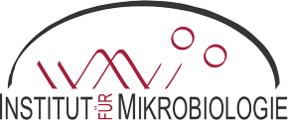
Description of Research Activities: The research unit Molecular Infection Biology investigates principles of pathogen-host-environment interactions at the molecular, cellular, organ, host, and population level with the goal to develop novel infection intervention and prevention strategies. We are particularly interested in the pathogens Legionella pneumophila (Legionnaires´ disease), Clostridioides difficile (antibiotic-associated infection), Streptococcus pneumonia (pneumococcal infection), Paenibacillus larvae (American foulbrood in honeybees), and Hymenosyphus fraxineus (Ash dieback).
1) Ecology, transmission and pathogenicity of Legionella pneumophila: We analyse the pathogen-host interactions of the causative agent of Legionnaires´s disease. In addition to protozoa, nematodes and human cells we study the infection of human lung tissue explants. Special emphasis is placed on peptidyl-prolyl-cis/trans-isomerases (PPIases) and the inflammasome (BMBF; www.gesundheitsforschung-bmbf.de/de/entwicklung-von-nicht-immunsuppressiven-fk506-analogen-als-macrophage-infectivity-9577.php).
2) Pathogenicity, diagnosis and treatment of Paenibacillus larvae: P. larvae is the causative agent of American foulbrood (AFB), the most serious bacterial infection in honeybees. We develop genotyping and molecular diagnostic tools to elucidate AFB outbreaks and epidemiological prevalences of P. larvae genotypes. Moreover, we characterize P. larvae-specific bacteriophages and develop biological augmentation strategies for honeybees.
3) Secondary metabolites of Hymenoscyphus fraxineus and its antagonists: The occurrence of the common ash (Fraxinus excelsior) in Central Europe is declining dramatically due to the infection by the non-native fungus Hymenoscyphus fraxineus. We investigate the relationships between ash as a host tree species and the fungal pathogen H. fraxineus and explore innovative approaches for pathogen management. The main goals of the project are to identify secondary metabolites that contribute to the virulence of H. fraxineus, and to characterize antifungal metabolites of epi- endophytic fungi and bacteria of F. excelsior that inhibit the pathogen (FNR; www.fraxforfuture.de).
4) Pneumococcal-host-interactions (apl. Prof. Simone Bergmann): We analyse the interaction between the biopathobiont Streptococcus pneumoniae and different human host niches including the pharyngeal epithelium, the lung tissue and the vascular system. In addition to a detailed biochemical deciphering of protein interactions, various cell culture-based infection models are established and combined with microscopic visualization (e.g. microfluidic pump system for simulation of bloodstream infections).